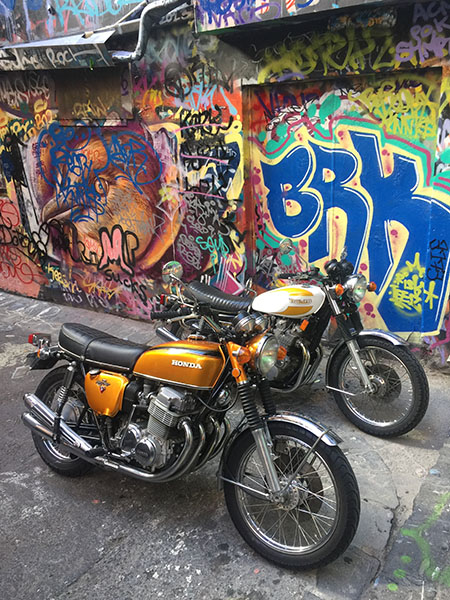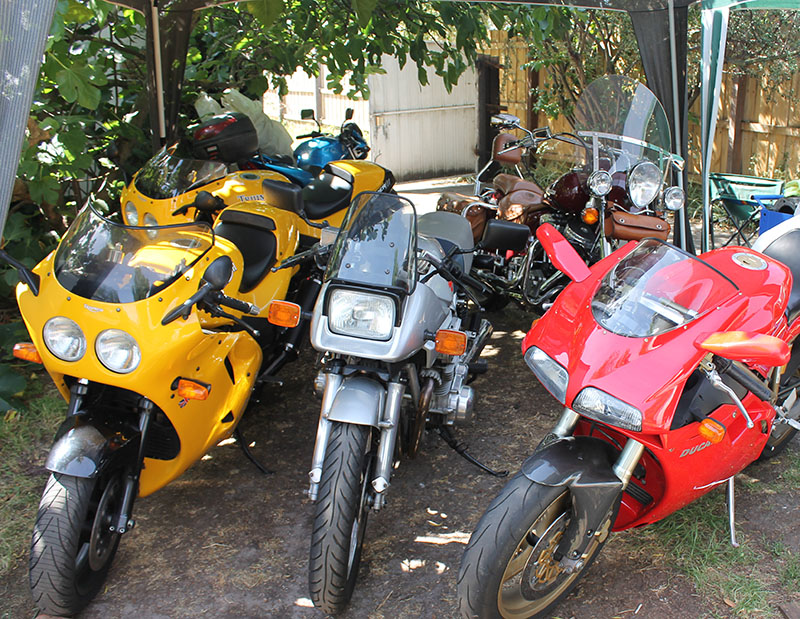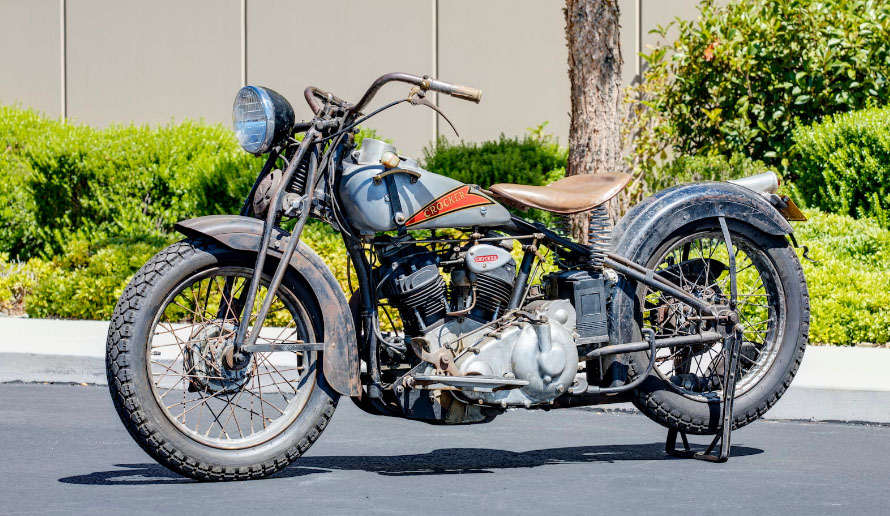Motorcycle Investor mag
Subscribe to our free email news
Boom or Bust?
Part 2 – July 21, 2020
We’re running a two-part series speculating on the mid-range future of the classic motorcycle market.
Central to this is the question of whether the rise in values across recent years is a phenomenon that lives and dies with baby boomers.
The first piece is by Phillip White, who was a little concerned that we expressed an interest in running it, with the advice it might be too gloomy.
Nevertheless, we thought it was worth giving a gallop. See it here.
Part two is a little more optimistic, though it may not be right! It takes a look at the reasons people say post-baby-boom generations will not take up classics and deconstructs those arguments. Here goes...

The Generation Game
by Guy 'Guido' Allen
Baby boomers have driven a big rise in the collectible vehicle market and the question on a lot of people’s lips is what happens when that gen fades away? Is there a bike price crash coming?
Listen to a group of baby-boomers (so, over 55) talk about the classic bike market and you’ll more often than not hear predictions of doom and gloom. As this generation, which has driven up the market and kept it afloat, dies out so too will interest in their toys. They reckon most of their prized possessions will either get carted off to the nearest auction house with instructions to sell at any price, while anything that doesn’t sell is dumped at the tip.
The reasons put forward for this are several – let’s have a squiz at them.
Wrong era: while the motorcycles of the sixties and seventies have huge meaning for baby boomers, it’s the only bikes of the eighties and nineties or later that will appeal to gen-X and millennials;
Too difficult to ride: millennials in particular no longer learn how to drive manual cars, so manual bikes that are sometimes a bit cranky are just too hard;
Nobody is going to have personal vehicles any more – we’ll all be forced to travel in autonomous electric pods;
Too much stuff: who’s going to take over all this crap? There’s just too much of it. And, no-one will be able to afford it.
Let’s tackle the list of problems from the top, shall we?

Wrong era
There is some logic to this, when you look at it in isolation. Lots of people get attached to particular cars and bikes when they’re young, for a variety of familiar reasons. It might be Mum, Dad or another favourite family member owned one and they went for a ride. They saw one as a kid and it left an impression, or perhaps it was something they desperately wanted just as they were starting to earn a living but couldn’t afford it at the time.
All of those things happen. However many of the world’s top investment bikes were made long before the baby boomers were even a late-night passionate glint in their eyes of their parents. Right now, prices for top-echelon machines from 1910 through to the late 1930s are booming.
The earlier bikes may be doing it because they’re historically important and have the cachet of being over a century old. As for machines from the 1930s, they’re just so damned good looking (I’m thinking Brough Superior, A-series Vincent and the like) while being the forebears of what we recognise as a modern performance motorcycle, rather than a powered bicycle.
Sure our age means we’re naturally attracted to the legend of the sixties and seventies, such as Bonneville, Commando, CB750-Four and Z900, but the serious numbers being paid for much older gear says there is a lot more than a birthday behind a classic buyer’s decision-making.
I reckon some of the legendary models mentioned above, among others, will hold lasting appeal.

Too difficult to ride
Yeah, nup. An all too popular meme on Faceplant and other anti-social media is a picture of a manual gearshift in a car with the supposedly hilarious caption ‘millennial anti-theft device’. Ho bloody ho.
Sure, pretty much everyone learns to drive in an auto these days and, outside motorcycling, manual transmissions are becoming an endangered species. But let’s not kid ourselves on this.
Compare the complexities of ‘driving’ an iPhone with operating a stick and a third pedal in a car, or a couple of extra levers on a motorcycle – I’m sorry, but we’re not even on the same planet. Anyone who can work the operating system and several layers of software in a smartphone can cope with a manual transmission.
And let’s take a look at one of the most popular classic bikes out there, namely Indians out of the thirties, forties and fifties. There are literally thousands of these things in service around the world – heck, one of my local clubs has over 300 members. The vast majority of people who currently ride these things did not cut their learner teeth on crash transmissions, foot clutches and manual retard/advance. Oh no, they’ve had to pick it up later in life.
Is there any valid reason why an interested millennial wouldn’t do the same? I doubt it.
No personal vehicles
Here’s the thing: yes we have very early prototypes of autonomous vehicles wandering around, and semi-automous or driver-assist software is becomingly increasingly common. However any predictions of a centralised pool of self-guided vehicles taking over in the next generation are highly optimistic.
Sure, it may happen eventually, but I doubt even our kids will be alive. To give you an idea of time scale, a group of three authors from the Budapest University of Technology and Economics suggests that market penetration of automated vehicles in Europe by 2030 will be anything from 18 to 25 per cent. The message? Don’t hold your breath waiting for the big shift.

Too much stuff
Looking at my own shed and those of the people I know, I’m beginning to think you might be on to something here. There is a surprising number of individuals out there with fleets numbering 100-plus, and even a quarter of that is beyond overwhelming for any normal family to cope with when the old dear who amassed this fortune finally falls off the perch. So, yes, there will be stories of fire sales and trailer loads of ‘treasure’ being taken to the tip.
But cold numbers suggest this won’t be an overwhelming trend, in part because the size of the potential market in Australia continues to grow. The Bureau of Statistics says that our population reached 25 million at the end of 2018, a rise of more than 400,000 in the preceding year and part of a longer-term trend that shows no sign of abating.
Now gen-X and millennials have been hobbled by expensive education and outrageous house prices, which has delayed discretionary spending. That’s a fancy way of saying it’s probably taking longer for them to get to get the mortgage and other living bills under control. However, unlike the boomers, many if not most will be have lifetime superannuation savings.
In any case, the good old Bureau of Stats comes to our rescue with the thought that, while wages have stagnated in recent years, household wealth – despite some inevitable periodic setbacks – has consistently risen over the decades.
That’s a rather long way of saying the numbers tend to defy what our eyes and instincts may tell us.
What next?
Little of this is scientific. But, to my way of thinking, if you disregard the odd recession – and there are signs were heading into one right now – the longer-term trend is that there will be a home for, and a very real value placed on, our hero bikes long after my generation falls off its mortal coil. And that would be a good thing, wouldn’t it?
***
Auction mayhem

Monterey 2019
Monterey is an annual auction week times to coincide with the Pebble Beach classic show. It’s primarily a car event but tends to feature some significant motorcycles. (Values in Australian dollars.)
Top 5 results
1. 1936 Crocker small tank - $1.2 million (Mecum Auctions, pictured above)
2. 1937 Crocker small tank - $1.05 million
3. 1938 Brough Superior SS100 - $499,000
4. 1912 Indian twin boardtrack racer - $373,000
5. 1914 Flying Merkel V-twin - $260,000
Oddball of the week
2014 Lotus C-01 - $179,000 (100 made)
This is the first time one has been sold at public auction.
Prominent fails
1. 1936 Indian Chief ex-Steve McQueen – Now asking $350,000
Estimate $370,000+
2. 1938 Brough Superior SS80 – top bid $125,000
Estimate $220,000+
3. 1954 Vincent Black Shadow – top bid $118,000
No estimate available
Most expensive bike ever sold at public auction
1954 Vincent Black Lightning - $1.37 million (Bonhams 2018 - the Jack Ehret bike)
Climbing values?
Triumph 1959 T120 (first Bonneville)
USA – 2007 $41,400, Bonhams
Aus – 2019 $44,000, Shannons
Note: the first result was just as the USA market peaked and moments before it went into recession.
Honda 1968 CB750-Four prototype (of four)
France – 2014, $221,000, Ebay
UK – 2018, $320,000, H&H
Ducati 1974 750SS green frame
USA – 2016, $260,000, Gooding & Co
USA – 2019, $332,000, Mecum
(all in Australian dollars)
Know your generations
Silent – 1928-1945
Baby boomer – 1946-1964
Gen-X – 1965-1980
Millenials – 1981-1996
(Source: Pew Research Centre)
-------------------------------------------------
Produced by AllMoto abn 61 400 694 722
Privacy: we do not collect cookies or any other data.

Archives
Contact



